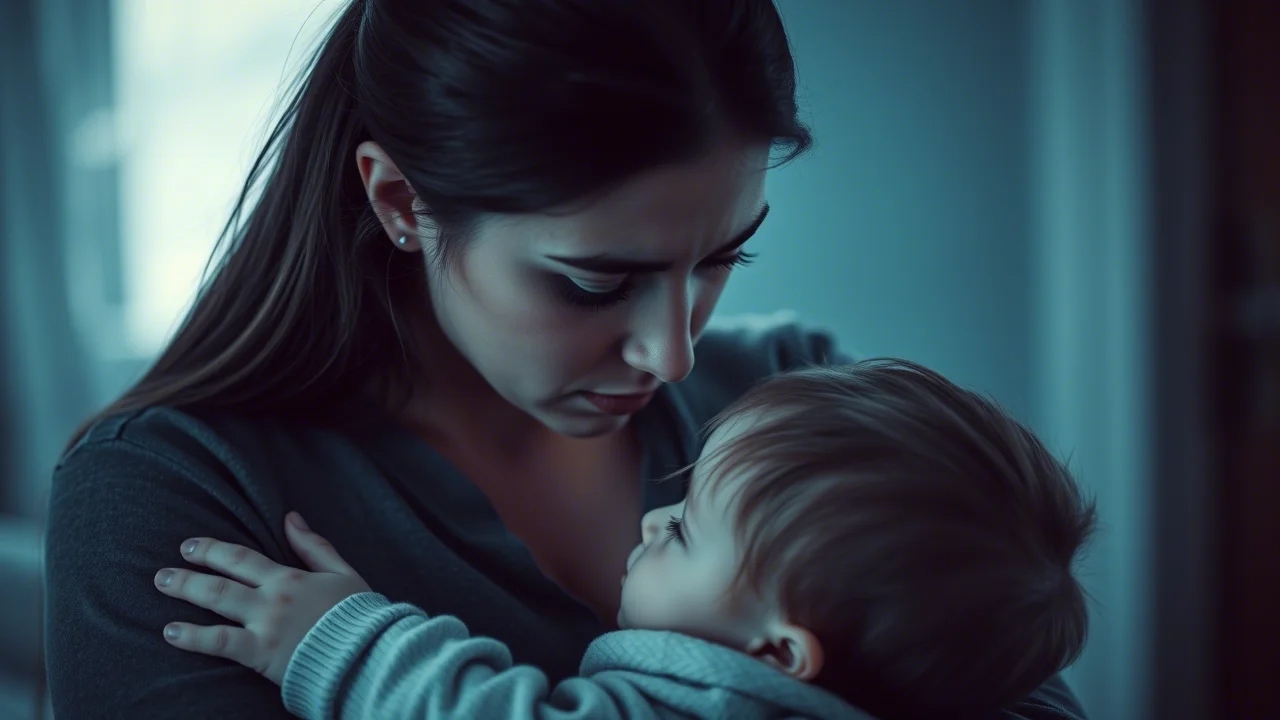Missed Cancers, Dismissed Women: The Fight for Early Breast Cancer Diagnosis
Okay, let’s talk about something really important, something that hits close to home for far too many young women. We’re diving into the world of early-onset breast cancer, specifically the bumpy, often frustrating road to getting a diagnosis when you’re under 40. You know, that age where doctors might just wave away your concerns with a “you’re too young for *that*.” Turns out, the internet, specifically online forums, holds a treasure trove of experiences that shed a bright, sometimes harsh, light on this very issue.
We recently looked at a fascinating study that used some pretty cool tech – Natural Language Processing, or NLP for short – to sift through years of conversations on an online forum hosted by the Young Survival Coalition. This group is all about supporting young adults dealing with breast cancer. We’re talking over half a million posts here, a decade’s worth of shared stories, fears, and advice. The goal? To figure out where the system is failing young women and causing delays in detecting cancer early.
The Problem: Too Young for Cancer? Apparently Not.
Let’s be real, when you think of breast cancer, you probably picture someone older, right? But the tough truth is, it’s the most common non-skin cancer for women in the U.S., and guess what? It’s increasing alarmingly in women under 40. And here’s the kicker: a growing number of these young women *don’t* have a family history. So, the standard advice – start screening at 40 or 50, maybe earlier if your family tree is dotted with cancer – just isn’t cutting it anymore for this rising tide of early cases.
Current guidelines, even with the recent nudge by the USPSTF to lower the starting age for routine mammograms from 50 to 40, still leave a huge gap for those under 40. Sure, some groups like ACOG suggest doctors talk to young women about *breast awareness* starting at 25, but that’s not screening. It’s like saying, “Hey, keep an eye out!” without giving you the map or the tools to navigate if you find something. With rates going up, we *desperately* need new ways to catch this early. And who better to learn from than the women who’ve lived through it?
Listening In: What Online Forums Revealed.
This is where the online forum study comes in. By analyzing these raw, unfiltered conversations, we get an “insider” perspective. People are often more honest online than they might be with their doctor or on a survey. We used NLP to categorize these posts into themes:
- First signs and symptoms
- Steps to diagnosis
- Healthcare interactions
- Patient-provider-system feelings
- Staging/type of cancer
We trained the computer using manually coded posts, teaching it to spot these themes across the massive dataset. It’s like teaching a super-smart assistant to read half a million diaries and pull out the key parts about their health journey.
Finding It Yourself: The Start of the Journey.
One of the most striking findings? A whopping 81% of these young women *self-detected* their breast cancer. That’s right, they found it themselves, not during a routine clinical exam. Imagine that – you’re just living your life, maybe in the shower, exercising, or even on your honeymoon (yes, that happened!), and you find a lump or notice something just doesn’t feel right.
Lumps were the most common first sign (over half the self-detected cases), but women also talked about other things like nipple discharge, bleeding, dimpling, redness, pain, and even fevers. Only about 17% of cases in the posts were first noticed by a healthcare provider, often during exams for those with a family history or just a standard check-up. This really hammers home the point: until we have better screening for this age group, knowing your own body and speaking up is absolutely critical.

The Diagnosis Maze: Navigating the System.
Okay, so you found something. What happens next? This is where the stories get tough. The study identified three major “crossroads” in the journey from noticing a symptom to getting a diagnosis, points where frustrating delays often occurred.
The first crossroad is the initial doctor’s visit. This is where many women felt dismissed. Providers would say things like, “You’re too young for breast cancer,” or “Pain means it’s not cancer,” or “It’s probably just a cyst.” While some doctors *did* take action despite these assumptions, many women had to really push and insist on further testing. It’s disheartening to think you have to *convince* your doctor to investigate a potential life-threatening issue.
The second crossroad involved imaging. Once tests were ordered, imaging (like ultrasound or mammography) was usually the first step. But these methods aren’t always sensitive enough, especially in younger, denser breast tissue. Women shared stories of imaging coming back clear, even when they *knew* something was wrong, leading to more delays and the need to advocate for different types of imaging, like MRI, which can be more accurate but isn’t always readily accessible or ordered.
The third crossroad was the biopsy. If imaging showed something suspicious, a biopsy followed. But even biopsies could sometimes yield false negatives, meaning the cancer was missed. This sent women back to square one, having to fight *again* for further investigation, despite persistent symptoms. This stage was often dependent on whether the imaging at the second crossroad was positive, highlighting how one missed step can cascade into significant delays.
These stories paint a clear picture: the path to diagnosis is often not a straight line, but a frustrating maze requiring immense patience and persistence from the patient.
The Emotional Toll and Life’s Demands.
Beyond the clinical hurdles, these young women were dealing with so much more. The posts revealed that their interactions with healthcare providers were often negative or neutral (about 70% fell into these categories). It’s hard enough facing a potential cancer diagnosis without feeling unheard or dismissed by the very people who are supposed to help you.
And then there are the unique challenges of being diagnosed with cancer in your 20s or 30s. Mental health struggles were a huge part of the conversation – dealing with depression and anxiety on top of the stress of treatment, or worrying about treatment triggering previous mental health issues.
Reproductive decisions became incredibly complex. Women without children debated egg preservation before treatment. Those who already had children grappled with fears of recurrence and not being there for their kids, or the guilt and difficulty of caring for young children while undergoing grueling treatment. One parent’s powerful message stood out: having children was “absolutely worth the risk,” even with a genetic mutation like BRCA. The physical effects of treatment, like changes to menstrual cycles, were also discussed – some welcoming the end of periods, others mourning their loss.

The Power of Persistence and Advocacy.
If there’s one message that came through loud and clear in these forums, it’s the absolute necessity of self-advocacy and persistence. Women who had navigated the system and finally received an accurate diagnosis strongly urged others *not* to give up. They shared their experiences, their frustrations, and their successes in pushing for more tests, different imaging, or second opinions.
They weren’t just sharing personal stories; they were building a community of informed advocates. They shared scientific articles, explained test results, and discussed clinical trial opportunities. This peer-to-peer support and knowledge sharing became a vital lifeline, empowering women to challenge the system and demand the thorough evaluation they needed.
And the stakes are high. Delays in diagnosis can mean finding the cancer at a later stage, when it might be more aggressive and treatment options are fewer. While advancements have improved mortality rates overall, earlier detection remains the best weapon against these harder-to-treat cases.
What We Learned and Where We Go.
Listening to these voices online, we identified four key areas where we really need to step up our game for young adults:


- Breast Awareness: The fact that most women self-detect confirms how important it is for young adults to know their breasts and report any changes. Clinicians need to counsel on this, and more importantly, *listen* when a patient reports an irregularity, regardless of age or family history.
- Better Imaging Guidelines: We need clearer guidelines on *when* to use mammography, ultrasound, or MRI in young adults with symptoms, recognizing the limitations of some methods in this age group.
- Biopsy Referrals: There’s a critical need for evidence-based guidance on when a biopsy should be performed for symptomatic young adults, *even if imaging is negative*. This was a major point of delay.
- Sociomedical Support: Healthcare services need to acknowledge and support the unique challenges young patients face, particularly regarding mental health, parenting, and fertility goals.
These findings echo recommendations from groups like ACOG and YSC. While changing official screening guidelines takes time and evidence, promoting breast awareness is something we can push for now. But it only works if clinicians are receptive and know how to proceed when a young patient presents with symptoms.
Looking Ahead: Closing the Gaps.
This study, by tapping into the collective experience of thousands of young women, gives us a powerful roadmap for improving care. It highlights the crucial pre-diagnosis period – the time between noticing something is wrong and getting a formal diagnosis – as a key area for intervention. The three crossroads of delay are clear targets for improvement in clinical practice.
Of course, the study has its limits – it’s based on online conversations (which might skew towards negative experiences) and doesn’t have demographic data. But the sheer volume and the raw honesty of the posts provide invaluable insights that complement other research.
Ultimately, the stories shared on that forum are a call to action. A call for healthcare providers to listen, for guidelines to evolve, and for young women to trust their bodies and persist until they get the answers they need. Because no one should have to fight *that hard* just to get a diagnosis.
Source: Springer







